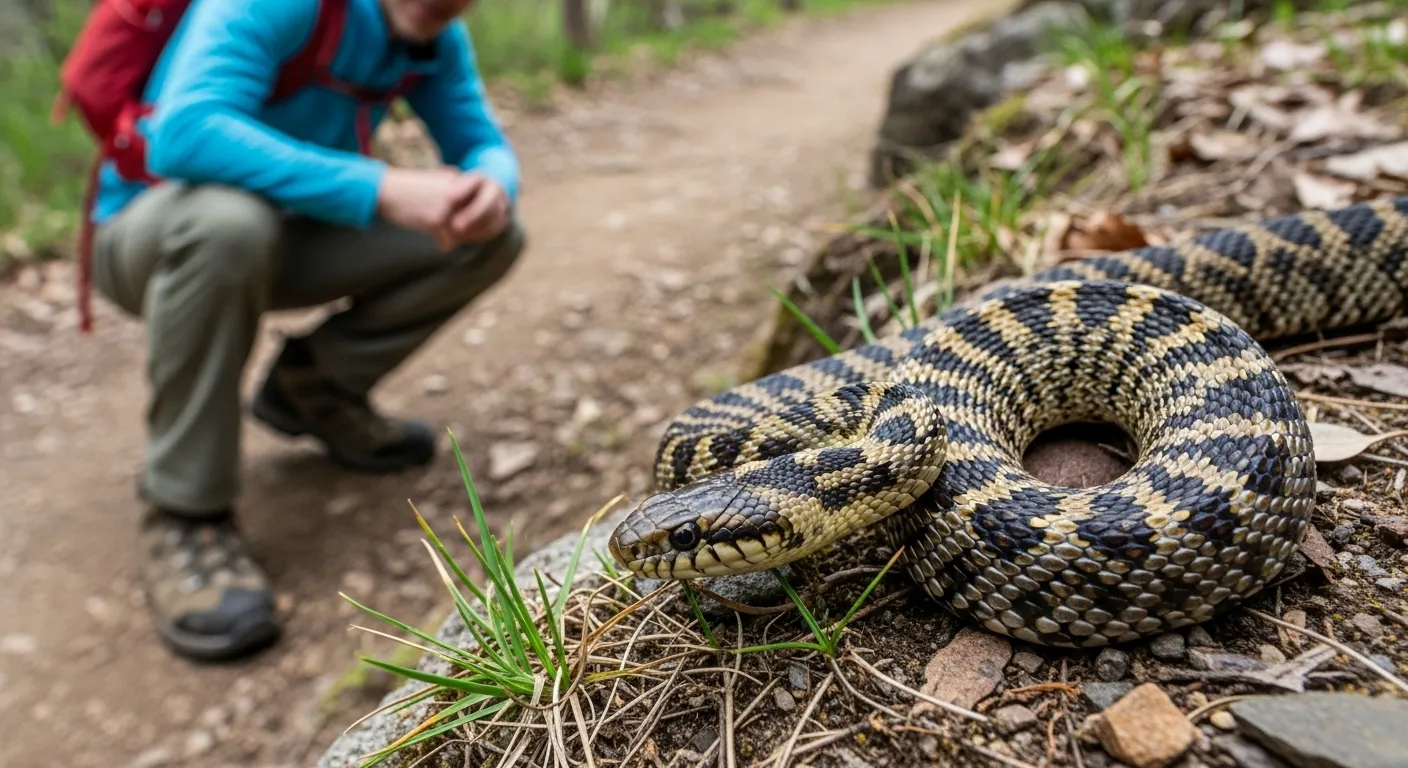
Wildlife Safety: How to Coexist and Avoid Bites
The overwhelming majority of snakebites are preventable. They happen when a snake is surprised, cornered, or intentionally handled. By adopting a few simple, common-sense habits, you can dramatically reduce your risk of a negative encounter and enjoy the outdoors with confidence. This is the core of practical wildlife safety.
General Prevention in Snake Country
On the Trail: When hiking or walking in areas known to have venomous snakes, your awareness is your best defense. Wear sturdy, over-the-ankle hiking boots and consider loose-fitting long pants. Stay on well-defined trails and avoid walking through tall grass or thick underbrush where you can’t see your feet. Be especially careful when stepping over logs or large rocks, as a snake may be resting on the other side. Never put your hands or feet into places you can’t see, such as crevices in rocks, hollow logs, or dense shrubs.
At Night: Many snake species are nocturnal, especially during hot weather. Always use a bright flashlight or headlamp when walking outside at night, even in familiar areas like a campground or your own backyard.
Around the Home: You can make your property less attractive to snakes by managing it with them in mind. Snakes are often drawn to places that offer shelter or food. Keep your lawn mowed, and remove piles of wood, rocks, and other debris that can serve as hiding spots. Store firewood on a rack off the ground. Since snakes prey on rodents, take steps to control mouse and rat populations by sealing cracks in your foundation and keeping pet food and birdseed in rodent-proof containers.
What to Do If You See a Rattlesnake (or any venomous snake)
Encountering a venomous snake in the wild can be startling, but it rarely needs to be dangerous. The snake’s primary goal is to be left alone. Knowing the correct, calm response is key. If you see a rattlesnake, here is your step-by-step guide:
1. FREEZE. Your first and most important action is to stop all movement immediately. Snakes have excellent motion detection, and freezing makes you less of a perceived threat. It also stops you from accidentally moving closer.
2. LOCATE. Calmly determine the snake’s exact location and how far away it is. Is it coiled? Is it moving away? Is it aware of you?
3. BACK AWAY SLOWLY. Once you know where the snake is, begin to move away from it slowly and deliberately. Do not make any sudden movements. Give it a very wide berth—a minimum of 10 to 15 feet (3 to 5 meters) is a safe starting point. If you must turn, do so slowly once you are at a safe distance.
4. LET IT BE. Never attempt to poke, move, harass, or kill the snake. A huge percentage of bites in the U.S. occur when people try to interfere with the animal. The snake is not hunting you; it is defending its space. If you leave it alone, it will leave you alone.
If the Unthinkable Happens: Snakebite First Aid
In the extremely rare event of a bite, proper first aid is simple and focuses on getting professional medical help as quickly as possible. Many traditional or “folk” remedies are not only ineffective but can cause significant harm.
WHAT TO DO:
1. Move away from the snake to a safe location to prevent a second bite.
2. Stay as calm and still as possible. Panicking increases your heart rate, which can circulate venom faster. Sit or lie down.
3. Call 911 or your local emergency number immediately. This is the most critical step. Inform the dispatcher that it is a snakebite. Access to modern antivenom is the only definitive treatment.
4. Remove tight items like rings, watches, and tight clothing from the bitten limb before swelling begins.
5. Keep the bite at or slightly below the level of the heart, if possible, while waiting for help.
WHAT NOT TO DO:
Do NOT apply a tourniquet. This can cut off blood flow and concentrate the venom, causing more tissue damage.
Do NOT cut the wound or attempt to suck out the venom. This does not work and increases the risk of infection and tissue damage.
Do NOT apply ice or heat to the wound.
Do NOT consume alcohol or caffeine.
For expert guidance in the United States, you can contact Poison Control at 1-800-222-1222. The most important thing is to get to a hospital quickly and safely.















